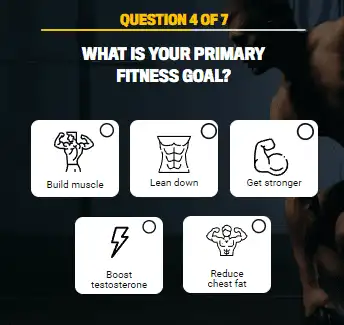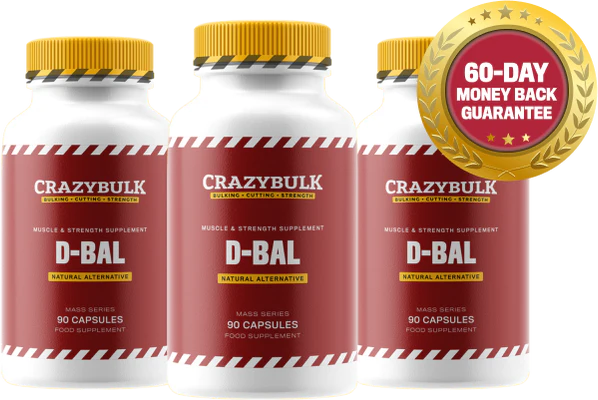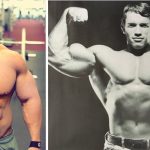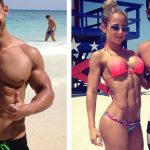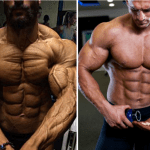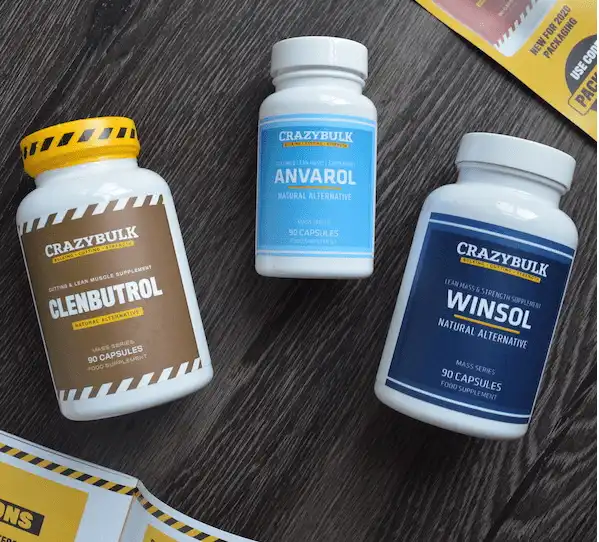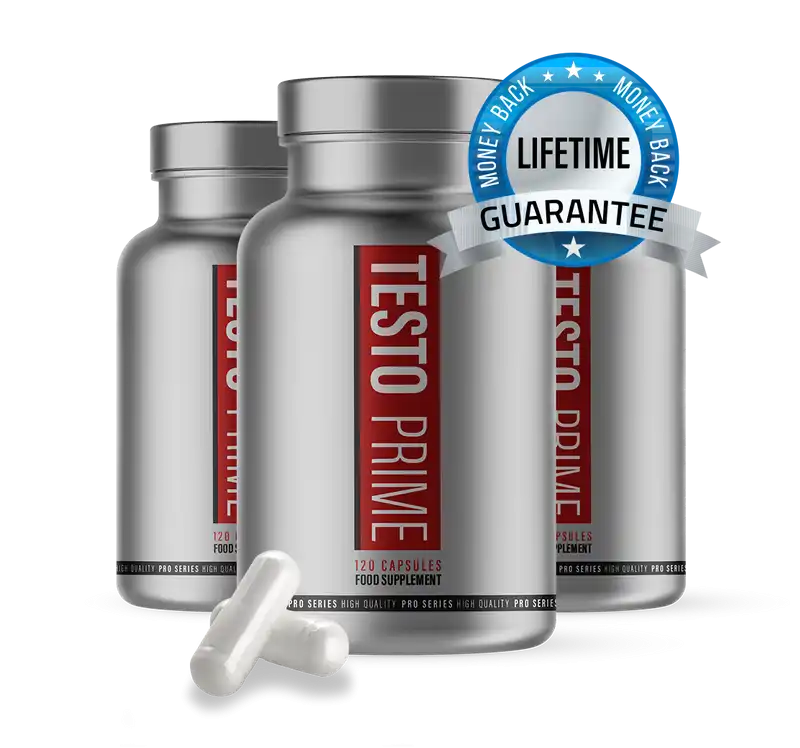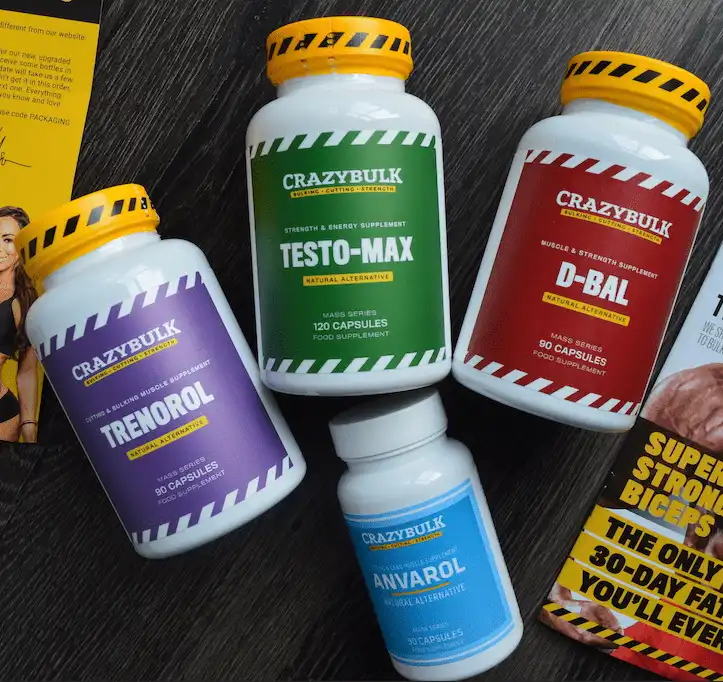When we’re talking bodybuilding, there is a vast variety of end results that you can achieve, but what is the best bodybuilding diet one can have?
Let’s first start off by analyzing the goals of a bodybuilder:
- Developing a musculature of substantial size
- Achieving optimal symmetry for both sides of each muscle group
- Developing round, well-separated muscles
- Bringing details and fullness to the musculature
- Filling up the frame
- Being as muscular as possible with as little fat as possible
- Developing strength, explosiveness and strength endurance, along with other physical properties
- Last but not least, learning how to express and flow with your body via posing
For this article however, we will discuss one of the most commonly misunderstood concepts in bodybuilding, namely the bodybuilding diet.
Knowing the goals above, we will analyze the functionality of nutrition and how our body uses it, when it comes to achieving those goals.
So, without further ado, let’s get to it by first discussing the bodybuilding approach to training and then moving on to how it is actually sustained energy-wise via daily nutrition.
BULKING or CUTTING? We teamed up with the number one bodybuilding supplement brand on the market to help you take your results to the next level. A free custom supplement plan designed to enhance your results.
Bodybuilding training


When the goal is developing an optimally muscular physique with as little fat as possible, there is a certain approach to training.
As you may have learned in some of our previous articles, bodybuilders utilize the Anaerobic energy systems of the body.
These energy systems are responsible for sustaining powerful, intense, short-burst movements.
Such movements trigger the fast-twitch muscle fibers of our musculature, which have the highest potential for growth, as opposed to the slow-twitch fibers. ((https://www.unm.edu/~lkravitz/Article%20folder/hypertrophy.html))
The fast-twitch fibers not only have the highest hypertrophy (growth) potential, but are also designed to overcome those high-intensity, short duration loads.
My Top Recommended Supplements
This is exactly why bodybuilders tend to aim at maximizing the load upon that specific part of the musculature.
Such stimulus is achieved by manipulating the training parameters in a way that will allow us to train at the higher levels of intensity.
Intensity, if you don’t know, is a characteristic of the workload, which expresses how close we get to our maximum strength capabilities.
In other words, the bodybuilding approach to weight training is focused on utilization of strength as a physical property.
Types of muscle growth


((https://www.unm.edu/~lkravitz/Article%20folder/hypertrophy.html))
These intense, short-burst movements can actually lead to different end results.
Mostly, bodybuilding progress is characterized by increases in bulk muscle growth and strength capabilities.
However, from a purely bodybuilding standpoint, where the goal is creating an aesthetically pleasing to look at physique, maximum strength gains are a secondary adaptation.
By triggering the secondary Anaerobic energy system, also referred to as the “Anaerobic-Lactic” energy system, we allow the body to tap into its intramuscular energy storage, namely glycogen.
Hands down the top-rated testosterone booster supplement for men who want faster muscle growth.
Glycogen is the stored form of glucose and is the primary source of fuel for moderate to high intensity workloads that last more than 15 seconds in a given bout (set).
A first important mention here is the fact that glucose and glycogen are the end product of carbohydrate metabolism.
What this simply means is that when it comes to performing optimally in a given bodybuilding workout, carbohydrates are of prime importance, as they are an inevitable part of the energy provision.
Legal muscle-building supplement that's designed to mimic the effects of dianabol without all side effects.
Now to the main point – Types of muscle growth.
Myofibril hypertrophy
We already mentioned that bodybuilders utilize the anaerobic energy systems of the body via high-intensity, short-burst movements.
However, there are TWO anaerobic systems, each leading to a different type of muscle growth.
The first system, called Anaerobic-Alactic, is responsible for handling very high intensity workloads that exceed 85% of your maximum strength capabilities.
This energy system is also referred to as the “Immediate energy system” and primarily uses the two most powerful energy substrates in the body – Adenosine triphosphate (ATP) & Creatine phosphate (CP).
However!
When we train with loads that exceed 85% of our maximum strength capabilities, we barely use muscle glycogen, if at all.
Instead, we mainly rely on ATP & CP and furthermore, such intensity also engages the central nervous system to a way bigger extent.
That is to say that 85%+ intensity loads are more strenuous on the nervous system and the body aims to primarily develop the nerve pathways, as well as the contractile elements of the musculature, called myofibrils.
Myofibrils, also known as muscle fibers play an essential role in muscle contraction.
When we train at the high intensity range (85%+), we maximize the following:
- Growth of the muscle fibers
- Development of the nerve pathways
And thereby, we achieve more prominent maximum strength gains and the bulk-muscle gains are a secondary adaptation.
Now, don’t get us wrong, you will still get big when doing strength training, but from a bodybuilding standpoint, focusing on this type of training is suboptimal.
Why you may ask?
Sarcoplasmic hypertrophy
We need to acknowledge the fact that though important for muscle contractions, the muscle fibers are just one of the components of our musculature.
There is a jelly-like fluid surrounding those muscle fibers, that is made up of non-contractile elements like protein, water and glycogen.
That fluid is called the “Sarcoplasm”
The growth of the sarcoplasm is what mainly accounts for the bulk muscle growth.
This type of growth is mainly sought by bodybuilders and physique athletes, that aim for optimal visual development.
Function-wise, the sarcoplasm is responsible for our levels of strength endurance.
That is to say that we need to tap into the glycogen in the muscle cells and thereby make the body increase its glycogen content in preparation for more work.
How do we do that? By utilizing the Anaerobic-Lactic energy system, that leads to the breakdown of glycogen for the regeneration of ATP, and also, leads to accumulation of metabolites.
The metabolites are the byproducts of energy breakdown, and some of them are – Pyruvate & hydrogen ions.
These metabolites cause the painful muscle burn and fatigue, which gets buffered via the production of lactic acid.
This metabolic stress to a big extent is a determinant for bodybuilder-like growth, as it allows the body to simply increase the volume of the sarcoplasm.
Here is to the first point – When the goal is bodybuilder-like growth, carbohydrates will fuel our workouts and allow to increase the volume of the sasrcoplasm.
To utilize this part of our bodybuilding diet plan of course, we need to set our training parameters in a manner that will allow the body to tap into the glycogen.
Optimal bodybuilding intensity forms at around 70~85% of our maximum strength capabilities, for sets of 6+ repetitions.
Protein in a bodybuilding diet


Alright, carbohydrates are important when it comes to properly fueling our bodybuilding workouts, but protein is important for what comes after.
Achieving results in bodybuilding depends on two primary determinants:
- Stress
- Adaptation
Even if we set our training parameters optimally for the goals listed at the beginning of this article, we won’t achieve s*#t, if our eating habits are not on point.
This is where protein comes into play to help us recover, grow and optimize the hormonal processes linked to those.
And so, we can conclude that sufficient daily protein intake in your bodybuilding diet is of prime importance for optimal growth, recovery and performance, workout to workout.
Optimal protein intake for maximizing lean muscle gains, forms at around 0.8-1.2 grams of protein per lbs. of bodyweight. ((https://www.tandfonline.com/doi/abs/10.1080/07315724.2000.10718974))
Logically, the more trained you are and the more lean muscle you have, the more protein that muscle will require to recover and grow.
And so, if you are just a beginner, less than a gram of protein daily, per pound of bodyweight, will be just enough to help you maximize muscle growth.
If however, you are more advanced, you should consider at least 1 gram of protein per lbs. of bodyweight.
What about fats in a bodybuilding diet?
As a matter of fact, even though we mentioned carbohydrates first, they are in fact, least important in our nutrition, as they are NOT essential for the body (though essential for bodybuilding training).
Paradoxic? Not really.
It is important to acknowledge that if we deplete the body of the other two macronutrients – Protein and fats, we will, in the long term, encounter adverse side effects.
Those include, but are not limited to:
- Hormonal disbalance ((https://www.sciencedirect.com/science/article/pii/0022473183901176?via%3Dihub))
- Loss of muscle
- Exhaustion
- Sub-optimal mental and physical performance
That is because there are ESSENTIAL fatty acids and proteins, which the body CANNOT produce on its own.
And that’s not the case with carbs, as the body can produce glucose via a process called “gluconeogenesis”.
That is to say that you should get a sufficient amount of proteins and fats and only then, consider your carb intake.
Optimal fat intake should be at least 20% of our daily energy intake and forms at around 0.35-0.45 grams of fats, per lbs of bodyweight.
What do bodybuilders eat for breakfast


This is a very commonly asked question, to which I have the perfect answer – It depends!
Bodybuilders tend to periodize their training, in a manner that will allow them to focus on different goals, separately.
That is to say that if a bodybuilder is cutting fat, their breakfast would be different, as opposed to what it would be if they are trying to bulk up.
And so, let’s first analyze the goals of each period and then list out the possible breakfast choices
Goals with bulking & bulking breakfast
The goal during the bulking period is to gain as much muscle mass as possible, with as little fat as possible.
During this period, carbohydrate intake is increased, in order for us to fuel our workouts.
Most bodybuilders tend to do their workouts according to the natural human rhythm, also known as the circadian rhythm.
The circadian rhythm implies the highest activity of the central nervous system (CNS), around afternoon (4-5 pm).
Highest CNS activity means the best workouts.
And so, a bodybuilder who’s bulking, would probably start loading up with carbohydrates right away from the morning.
That is to say that a bulking breakfast would be abundant of all 3 macronutrients – Fats, carbohydrates and protein, thereby consisting of foods like:
- Oats
- Fruits
- Eggs
- Rice
- Beef
- Legumes
Note here that red meats like beef have greater creatine content. And while creatine can come in the form of a supplement, it is also the secondary energy storage, next to ATP, as we mentioned earlier.
Consuming red meats in the hours before a workout definitely gives more power, so do try it out!
Goals with cutting & cutting breakfast
Alright, we now know that in order to build muscle, we need a good level of carb intake, as that is what will fuel our muscle-building workouts.
On the flipside, we have the second training period of bodybuilders, which is the shredding period, also referred to as the period of fat loss.
During this period, the bodybuilder’s goal is to lose as much fat as possible, with as little muscle loss as possible.
To optimize lean body mass retention, there are a couple of factors to consider:
- Granting sufficient protein and fat intake ((https://www.ncbi.nlm.nih.gov/pubmed/28919842))
- Being in a moderate caloric deficit ((https://www.ncbi.nlm.nih.gov/pubmed/24864135))
The cutting period is also characterized with the higher levels of appetite and it is often reported that people losing fat, experience hunger more often (duh!).
This of course, is completely normal, given that we put the body in the conditions of an energy deficit.
However, there are ways to fight the elevated appetite and also optimize lean body mass retention, through nutrition.
Fats & proteins, unlike carbs, are way more satiating, even at a smaller total volume of food.
That is to say that a bodybuilder’s breakfast, during a cutting period, will consist of a lot of protein & fats and a moderate amount of carbs.
Satiating breakfast foods


- Eggs
- Beef
- Avocados (very satiating, abundant of healthy fats)
- Some dairy products
- Whey protein
- Favorite breakfast – Boiled potatoes with beef <- Ultimate satiety meal
We need to acknowledge and remember the fact that carbohydrates (glucose & glycogen) are of prime importance when it comes to performing optimally in a bodybuilding-oriented workout.
That is why, if we are in a cutting period, we create the deficit at the expense of carbs and some fats, while keeping protein the same or even slightly increasing it to optimize muscle retention.
However, we must never reach the extremes and severely deplete carbohydrates, as that will hinder our performance.
And so, to sum this section up, we will say the following:
- A bodybuilder who is trying to build muscle mass will start their day with a breakfat abundant of all 3 macronutrients, in preparation for the heavy, muscle-building workout later on.
- A bodybuilder who is trying to cut fat and retain muscle mass while also regulating appetite, will start their day with a breakfast abundant of fats and proteins but also, a moderate carb intake to fuel their workout.
Bodybuilding foods to eat


We have now established common terminology and if you have understood the information, you should have a mental plan of action.
Let’s rehearse what we learned thus far:
- Bodybuilders should utilize the anaerobic-lactic energy system to allow the body to tap into the glycogen reserves, which in turn will result in bodybuilder-like growth of the body, by increasing the volume of the sarcoplasm.
- Given that this system is utilized, bodybuilders should grant proper fuel for it, namely via carbohydrate intake. The end product of carb metabolism is the glycogen.
- Bodybuilders who are bulking must have an abundance of all 3 macronutrients in their breakfast in order to prepare for the heavy bodybuilding workouts
- Bodybuilders who are cutting must have a good amount of the satiating protein and fats in their breakfast, as well as carbs to fuel the workouts.
So far, so good.
Now, let’s take a look at our recommended bodybuilding food chart, for each macronutrient.
Protein
We know that protein is important, but there’s another thing to it – Once we ingest protein, the body breaks it down to its building blocks, which are called amino acids.
Those amino acids then get used for whatever needed.
HOWEVER!
There are essential and non-essential amino acids.
What this simply means is that there are some amino acids that the body can’t produce on its own, which is why we have to derive them from food, if we are aiming for optimal physical and mental performance and growth.
Animal products contain the full amino acid profile, which is why it is highly recommended that bodybuilders focus on those as their main source of protein:
- Beef
- Chicken
- Veal
- Pork
- Eggs
- Yellow cheese
- Feta cheese
- Fish
Note that beef, eggs and fish have the highest biological value of the protein content.
What this means is that these meats will provide the most efficient to use protein for the body.
Now, if you are a vegetarian or a vegan, worry not.
Even though plant products don’t have the full amino acid profile, they can be smartly combined, in order to get the full set of amino acids needed for proper recovery.
Here are good plant-based alternatives:
- Hemp protein
- Spirulina
- Lentils
- Beans
- ALL legumes
- White rice
- Brown rice
- Quinoa
- Soy
Ultimately, the goal is to combine at least two of those, so that they compensate for the lack of certain amino acids in one another.
Fats
Secondly, the other important macronutrient – Fats!
Generally, most protein-rich foods also contain a good amount of fats, but if needed, here are the optimal sources to use for dietary fat intake:
- Olive oil
- Omega-3 & 6 fatty acids
- Beef meat
- Eggs
- Some butter
- Walnuts
- Almonds
- Fatty fish like salmon
- Fatty milk
- Olives
- Peanut butter
Make sure to consider the fat coming from protein-rich foods and account it to your daily intake!
Carbohydrates
Last but not least, the fuel for your vehicle – Carbohydrates.
As we mentioned, when the task is developing an optimal physique, visually, that means you would want to tap into the glycogen, that is synthesized during carb metabolism.
In other words, carb intake is of prime importance for optimal weight training, bodybuilding-oriented performance.
It needs to be noted that there are a couple of types of carbohydrates – Complex, simple, fast and slow.
For the most part, complex carbs are slow carbs and simple carbs are fast carbs, with some exceptions.
Without making it too complicated, let us explain:
- Simple carbohydrates logically have simpler structures and get absorbed by the body quickly, thereby making spikes in the insulin.
- Complex carbohydrates on the other hand have more complex structures and get absorbed by the body more gradually, with no spikes in insulin.
That is to say that complex carbohydrates are the preferred choice for bodybuilders, as they tend to provide energy in a more sustainable manner and actually get stored as glycogen to a bigger degree.
Sources of complex carbohydrates


- Brown rice
- Beans
- Lentils
- Quinoa
- Oats
- Wholegrain bread
- Potatoes
- Sweet potatoes
- Vegetables
Furthermore, complex carbohydrates tend to be abundant of precious fiber, vitamins and minerals, thereby giving way more benefits than the foods that contain simple carbohydrates.
However, even though that is the case, simple carbs do have their place in our diet, as they are the perfect immediate energy source in case of instant need, such as:
- During a prolonged run
- After a workout
- During mental activity
Simple carbs are mainly derived from sugary foods & fruits.
It is a good idea for example, to include fruits or even honey, along with the complex carbs derived from your oats for example.
With the information given in this section, you should be able to ultimately create your optimal bodybuilding meal plan!
If you are new to this however, check out the next section.
Bodybuilding diet for beginners


On here, we’re giving you a sample bodybuilding diet for beginners. Note that you should experiment with the quantities of the foods listed, as each and every person has different individual needs.
Breakfast
Here is a classical bodybuilding breakfast that has a main goal of helping you bulk up, by fueling you with carbs, protein and fats
- Buttery scrambled eggs on low heat
This is the perfect protein source, as eggs are rated at 100 BV (Biological value). Note that if the eggs go through an aggressive thermal treatment (cooking), the structure and quality of the protein will decrease. This is why we scramble them on low heat for a longer period of time.
- Oats with yoghurt & banana
The PERFECT source of some more protein, as well as simple and complex carbs. Blend the yoghurt with the banana and pour over the oats.
You can even throw in a scoop of whey protein to maximize protein intake upon breakfast
Lunch
Come lunch time, it’s time to step your game up. As opposed to the relatively light breakfast, we start off loading seriously now.
- Beef
As mentioned, red meats like beef have a higher protein & creatine content, accounting for better performance at the gym.
Try it for yourself – Get yourself some ground beef and cook it on moderate heat to retain that protein structure. Tell us how your workout went that day.
- Brown rice
As opposed to white rice, brown rice has more fiber and thereby, gets absorbed and stored as glycogen slower, over time. Perfect source of carbs to further fuel you up.
- Broccoli & carrots
Beef, rice and steamed veggies – This must be my favorite choice for lunch and dinner.
On top of the abundance of protein, creatine and carbohydrates, we also get the deliciousness and crunchy consistency of these veggies.
Let the beef cook on low heat and cover the pan up to create steam. In the meantime, chop up some carrots into strips, cut the broccoli into medium pieces, wash them and throw them into the mix.
Cover the pan and let ’em steam for 5-8 minutes.
Perfect lunch.
Post-workout meal
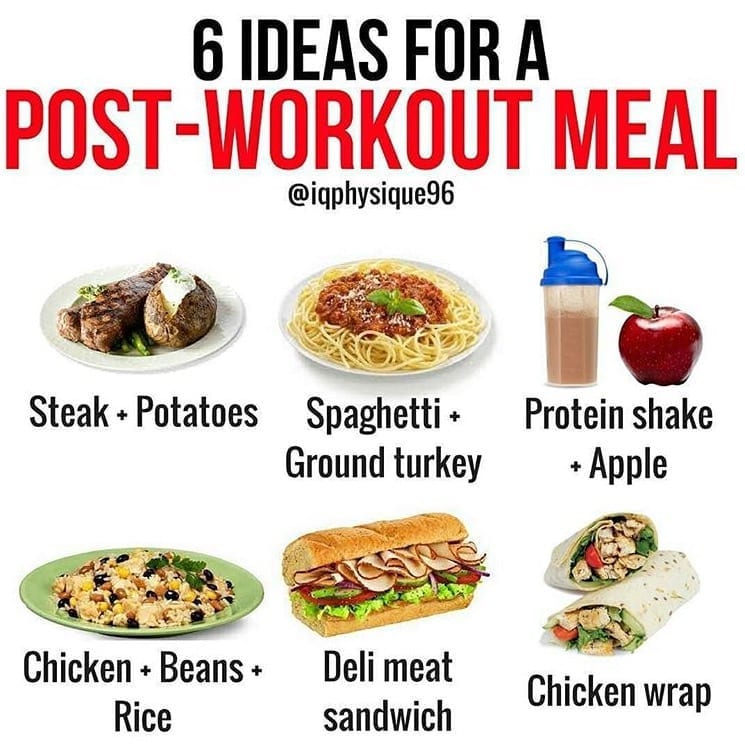

The abundance of nutrients in the breakfast and lunch should have you loaded for your afternoon workout.
Once you’re done with the training session, it is time to give the body food to use for recovery.
Note that protein intake is our primary focus for post-workout nutrition.
You can consume your post-workout meal, within 3 hours after a workout, so do not worry about that “Anabolic window”.
Here is one of my favorite post-workout meals
- Salmon
Salmon is a relatively light food, yet abundant of protein & healthy fats. Eating salmon or any other fish after a workout, your stomach won’t feel heavy but then again, you will be able to fulfill the demands for protein.
- Sweet potatoes
It needs to be noted that bodybuilding training isn’t a full-on glycogen depleting activity, as it only uses about 20-25% of our glycogen storages.
However, it is good to have some carbohydrates in our post workout nutrition, in order to recover those glycogen storages.
Dinner
Last but not least- Dinner!
The last meal of the day should be light and must not be consumed directly before sleep.
I usually go for little carbs, more veggies and a good amount of protein for my dinner.
Of course, if you have a highly-demanding physical activity on the next morning, you can feel free to consume an abundance of carbs as well.
Note that contrary to popular belief, such consumption WILL NOT lead to severe fat gain, given that your energy balance is on point.
Instead, the body will store those carbs from dinner, in the form of glycogen to use for later!
And so, here is my favorite dinner:
- Boiled eggs
The protein from eggs digest slowly and grants the body enough to last it throughout the 8 hour fasting period at night (sleeping).
Boiled eggs are easy to digest and can be made delicious.
- Salad
I usually like a lighter dinner! I boil some eggs, cut up some veggies and throw the eggs into the salad, to make for the perfect, light, yet satiating dinner.
Include veggies of choice.
My favorite salad contains the following – Green or iceberg salad, red pepper, tomatoes, cucumber, olives, some cashews, pomegranate, some olive oil and some vinegar.
Light. Nutritious. Delicious. Offers a variety of tastes for the receptors to enjoy.
Another option for pre-bed meal is a dose of casein protein, as it is the type of protein that takes the longest to digest.
Top 10 bodybuilding foods
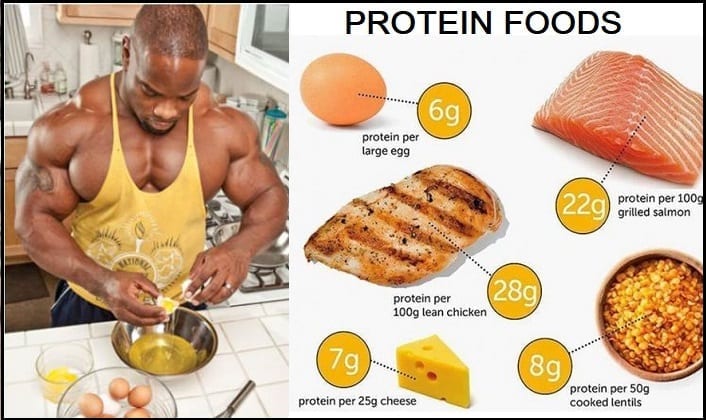

To wrap this article up, we will give you our top 10 foods for bodybuilding.
- Eggs & Beef
These are the two best sources of protein in our opinion. They have the highest biological value and an overall great content.
Easy to digest and very empowering!
- Salmon & other fish
Again – Quality protein, light, well-digestible and satiating!
- White & brown rice
Need fuel for your training sessions? This is your go-to choice.
- Veggies
All kinds of vegetables are suitable to create a bigger food volume during a period of cutting, when satiating yourself is difficult.
Veggies are low-calorie foods and during a shredding period, we can practically eat them forever.
Most soft veggies have just a couple dozen calories per kilogram.
On top of that, they are abundant of micronutrients (vitamins and minerals), that are of prime importance for proper functioning of the body.
- Whey protein
We know this is a supplement, but supplements are a part of our daily nutrition!
Whey protein has been proven to be effective in times of need, where we don’t have time to cook.
It is an efficient, high-value source of protein
- Casein protein
Again, if we don’t feel like having a full-on dinner, casein can be supplemented with to optimize during-sleep recovery.
- Fruits
During a shredding period, there seems to be a big desire for sugary foods.
Though sweet foods like waffles are not particularly unhealthy in moderate amounts, the better option is consuming fruits.
Fruits are a good source of simple carbs, fiber and other important micronutrients
- Chicken
Last but not least – Chicken!
This is the most accessible, affordable and richest source of protein.
It is easy for cooking, tasty and can be utilized in numerous ways!
Bottom line
The bodybuilding approach to training demands a nutrition approach that is abundant of all 3 macronutrients – Carbs, proteins and fats.
Carbs will grant us sufficient energy for the intense, bodybuilding workouts.
Protein and fats will grant optimal recovery on a neuromuscular and hormonal levels after the workout.
This is why it is important to never reach extremes.
Remember that the balance of all 3 macronutrients is the most important thing for your bodybuilding diet.

